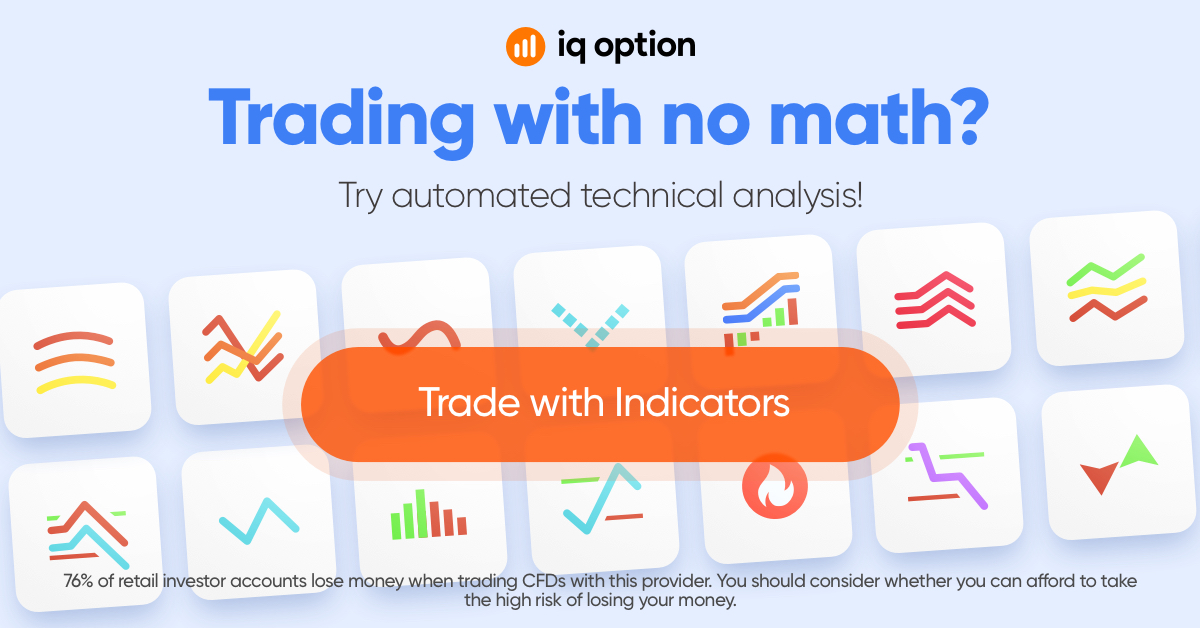Optimal time frame.
Price charts are loaded with information about historical asset performance. However, past performance of any asset becomes less relevant over time. On the one hand, traders want to receive as much relevant information from historical data as possible. On the other hand, they try not to overanalyze past performance that is oftentimes no longer relevant. Hence, the question: what time frame to trade and what time frame to analyze?
By choosing the time frame that suits your trading strategy best, you increase the chances of conducting quality research before you open the deal and, therefore, increase the chances of identifying the underlying market powers correctly. Choosing the right time frame is essential for every technical analyst, as it can help gather relevant information and manage the risk of acting upon false signals.
When working with IQ Option, the number of time frames you can choose from is truly astonishing. They range from several seconds to one month. There are certain techniques that will help you determine the time frame that suits your particular needs. It is worth remembering that all time frames have pros and cons of their own.
Optimal time frame
You probably already know that different asset classes benefit from different time frames. The reason is simple. Assets with lower volatility, such as Commodities and ETF’s, are generally traded over longer time periods and their time frame shall be chosen accordingly. Currency pairs (as in Forex), on the other hand, are well suited for short-term trades and many traders opt for shorter time frames when working with these assets. The asset you are about to trade is one of the prime factors in determining the optimal time frame.
Choose the timeframe that suits your trading style, taking into consideration the following aspects. The bigger the scale, the more reliable are the signals observed and the fewer of them will be received. Conversely, on a smaller scale, you will have more incentives to open and close the trade, often driven by market noize (random price movements that are not reflective of the overall market sentiment). Settle for the time frame that can offer the optimal mix of quantity and accuracy of the signals based on your personal trading style and asset choice.
Since smaller time frames tend to generate higher levels of price noise, they can be confusing to work with when it comes to entry and exit points. It’s all too easy to misinterpret the signal and fail to distinguish, say, a reversal from a random price twitch. It might be a good idea for novice traders to start trading on longer time frames. If you trade Forex, you might consider working with time frames that range between 1 and 4 hours. Make sure that you are comfortable working on longer time frames before you switch to shorter ones.
Multiple time frames
Choosing the time frames that suits your needs is a crucial part of anyone’s trading strategy, but it may be reasonable to look at the chart from a different angle before you open the deal. The difference that information, received from additional time frame analysis, makes can make or break your deal. It will help you make an informed decision and minimize the effects of the price noize. More than that, the same technical analysis tools can provide different signals on different time frames. Indicator readings received on different time frames can confirm each other’s signals.
It is common to complement the main time frame with one that is shorter and another one that is longer. Longer time frames will hint at the prevailing trend, as well as primary support and resistance levels. Shorter time frames, in turn, will provide you with more detailed information showing additional signals to confirm the ones obtained from your main timeframe.




